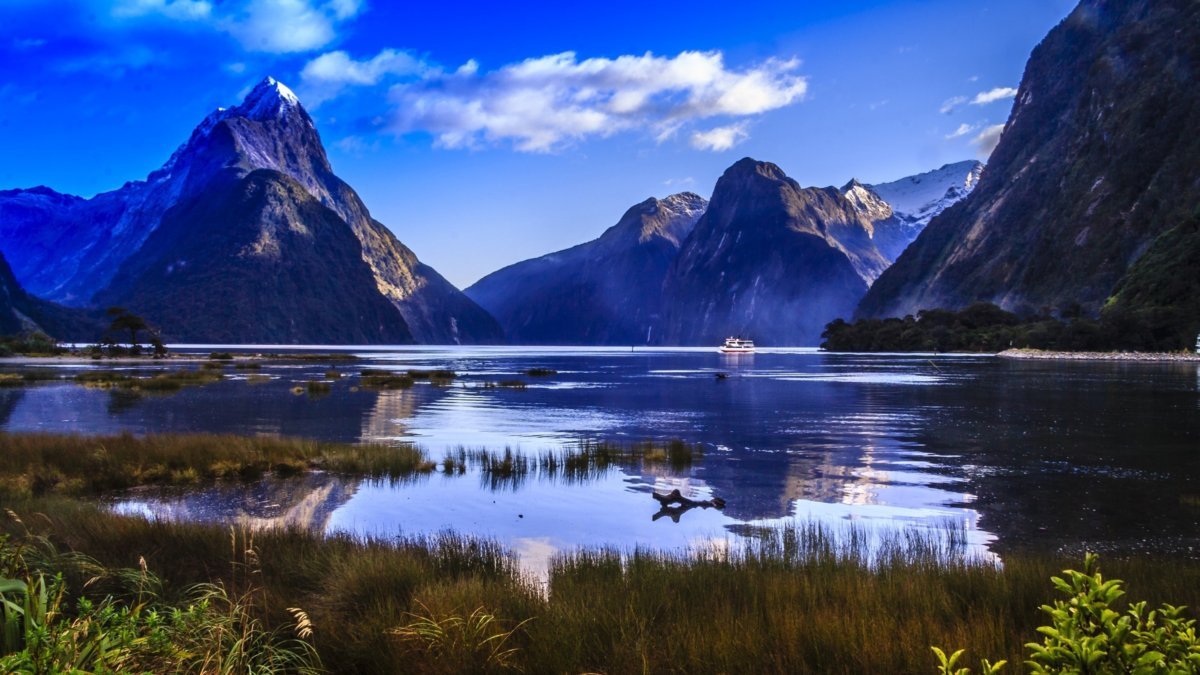
By Simon Lambert
Ko Panekire te maunga: Panekire is the mountain
Ko Waikaremoana te roto: Waikaremoana is the lake
When we, as Māori (the Indigenous People of Aotearoa New Zealand), introduce ourselves, we locate ourselves in the land and the waters. These are genealogical as well as geographic links, with landscapes and ecosystems personified as ancestors and relations as well as recognized as resources and wealth. All landscapes include hazards and New Zealand, in the southwestern rim of the Pacific Ring of Fire, has regular seismic activity, personified as the movements of Rūaumoko who is the unborn child of Papa-tu-a-nuku, the Earth Mother. The 6.3M earthquake on February 22, 2011 killed 185 people, many more seriously injured much of the CBD was destroyed or ultimately demolished, and likewise many hundreds of residents lost their homes. All of us continued the uneasy relationship with Rūaumoko and the various fault lines that lace Aotearoa.
Once we had secured ourselves and our families, when we could begin to think of working again, we realised there was an urgent need for Māori-focused, Māori-led research. Over the next three years I worked on three interlinked programs. The first was funded by my university and was a quick grab of personal and professional experiences of Māori first responders and managers in the CBD [1]. Their stories were of fear, of courage, and of professionalism mixed with humour. That initial project lead to a larger project with government support that looked at the pathways to resilience demonstrated by Māori families. Their strategies included moving, either north or south of the city, to hometowns in the North Island, with some migrating to Australia, especially the coasts of Queensland where a Māori diaspora is in its third generation. Amidst the relocation decisions, insurance disputes, delayed rebuilding, and among the family and cultural supports, our research showed that pre-disaster economic well-being was fundamental to Māori resilience in the post-disaster landscape.
As a researcher, I was using different methods to analyse the well-being and resilience of Māori such as Qualitative Comparative Analysis (QCA) and Social Network Analysis (SNA). SNA was particularly useful in my third project, funded by a Māori Centre of Research Excellence. Partnering with a Māori mental health provider, we identified the importance of whanau (extended family) and other Māori service providers [2]. We also found many Māori were responding to, and recovering from, earlier personal, family and community disasters that often originated in the poor socio-economic contexts and marginalized political-economic nature of Māori within our own country.
These insights unpack the disastrous creation of risks for Indigenous Peoples by historical colonization and contemporary racism. In many ways, DRR is what Indigenous communities have been doing for thousands of years; modernity merely frames that as a resistance to colonial structures that have created more risks of Indigenous communities through the production of settler wealth.
I’m still learning about innovations in the social sciences and continue to refine my research skills. Researchers must be open to new tools and approaches; this is the challenge from the growing number of Indigenous researchers, including those studying disasters. Many non-Indigenous researchers are
now trying to understand and partner with Indigenous groups appropriately and ethically. We applaud these efforts as we also accept the way forward is not easy.
I have had the privilege of presenting my work around New Zealand and internationally including at UNDRR platforms and began to meet representatives of other Indigenous communities fighting for the rights of their Peoples to frame their own DRR strategies [3]. Our research is now being introduced across disciplines through conferences such as the recent Southern Political Science Association in Austin. This struggle continues, and in May I will be back at the latest UNDRR Global Platform in Geneva, May 13-17, chairing a panel of passionate Indigenous DRR advocates. I hope we get the opportunity to convince other DRR practitioners of the value of our Indigenous knowledges while arguing these knowledges come with expectations of respect and reciprocity.
Ngā mihi nui/Many greetings!
Dr. Simon J. Lambert
Indigenous Studies, University of Saskatchewan
1. Lambert, S., Indigenous Peoples and urban disaster: Māori responses to the 2010-12 Christchurch earthquakes. Australasian Journal of Disaster and Trauma Studies, 2014. 18(1): p. 39-48.
2. Lambert, S., Post-disaster Indigenous Mental Health Support: Tangata Whaiora networks after the 2010-2012 Ōtautahi/Christchurch Earthquakes. MAI Review, 2016. 5(1): p. 76-91.
3. Lambert, S., et al., Policies for Indigenous disaster risk reduction: multilateral strategies and state policies in the International Indigenous Policy Journal, 2019. 10(2).